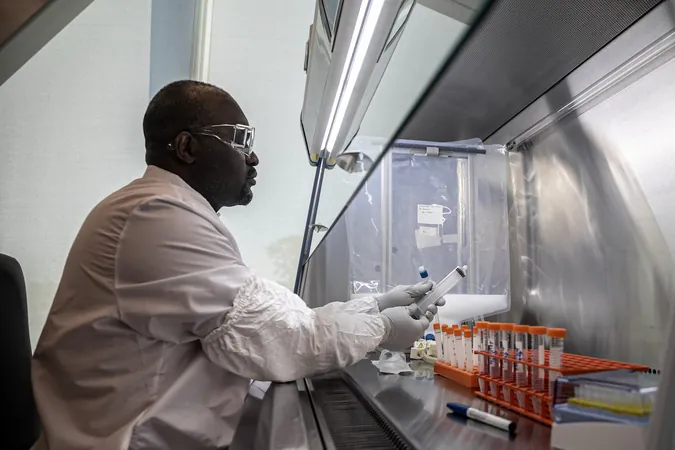
Breakthrough Discovery: First Virus Unveiled that Infects Legionella Bacteria Behind Legionnaire's Disease
2025-09-23
Author: Charlotte
Game-Changing Discovery by Toronto Scientists
In a groundbreaking revelation, researchers from the University of Toronto have identified the first-ever virus that infects *Legionella pneumophila*, the bacteria responsible for the severe respiratory illness known as Legionnaire's disease.
Unlocking Potential Treatment Avenues
Published in *Science Advances*, their remarkable findings suggest the potential for utilizing bacterial viruses—better known as bacteriophages or phages—to treat infections caused by *Legionella*. This discovery not only sheds light on the evolutionary story of the bacteria but opens new treatment frontiers.
Meet LME-1: The Newly Identified Phage
The newly discovered phage, named LME-1, was uncovered by a diligent research team led by Dr. Alexander Ensminger, an associate professor at U of T’s Temerty Faculty of Medicine, alongside senior research associate Beth Nicholson. Their dedication has uncovered LME-1’s ability to infect *Legionella pneumophila* and impede its growth within human immune cells.
A 50-Year Wait Finally Comes to an End
Remarkably, Ensminger notes that scientists in the *Legionella* field have been in search of such phages for over five decades. "Despite our extensive efforts to collect samples from various water sources, we had this potential phage hidden in our freezer all along. We just needed to figure out how to activate it," he shared.
The Role of CRISPR-Cas in Discovery
The quest to find *Legionella* phages began when researchers discovered that many strains of the bacteria featured active CRISPR-Cas systems—essentially their immune defense against viruses. These systems hinted at past interactions with unidentified phages, sparking the researchers’ curiosity about the enigmatic genetic component, LME-1.
A Moment of Revelation
The team faced challenges in bringing LME-1 to life until they tried a novel approach involving antibiotic resistance, inspired by past lab data. Their persistence paid off, revealing phage production and allowing them to visualize the virus under an electron microscope.









 Brasil (PT)
Brasil (PT)
 Canada (EN)
Canada (EN)
 Chile (ES)
Chile (ES)
 Česko (CS)
Česko (CS)
 대한민국 (KO)
대한민국 (KO)
 España (ES)
España (ES)
 France (FR)
France (FR)
 Hong Kong (EN)
Hong Kong (EN)
 Italia (IT)
Italia (IT)
 日本 (JA)
日本 (JA)
 Magyarország (HU)
Magyarország (HU)
 Norge (NO)
Norge (NO)
 Polska (PL)
Polska (PL)
 Schweiz (DE)
Schweiz (DE)
 Singapore (EN)
Singapore (EN)
 Sverige (SV)
Sverige (SV)
 Suomi (FI)
Suomi (FI)
 Türkiye (TR)
Türkiye (TR)
 الإمارات العربية المتحدة (AR)
الإمارات العربية المتحدة (AR)